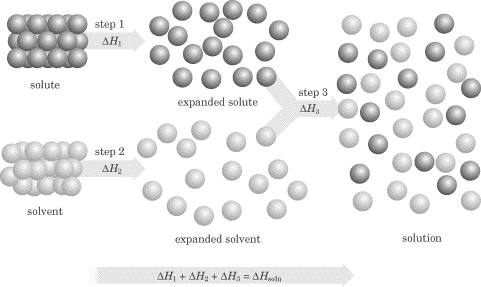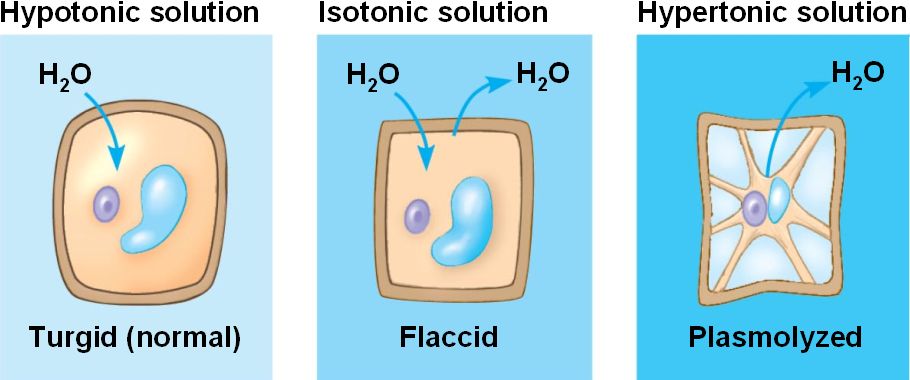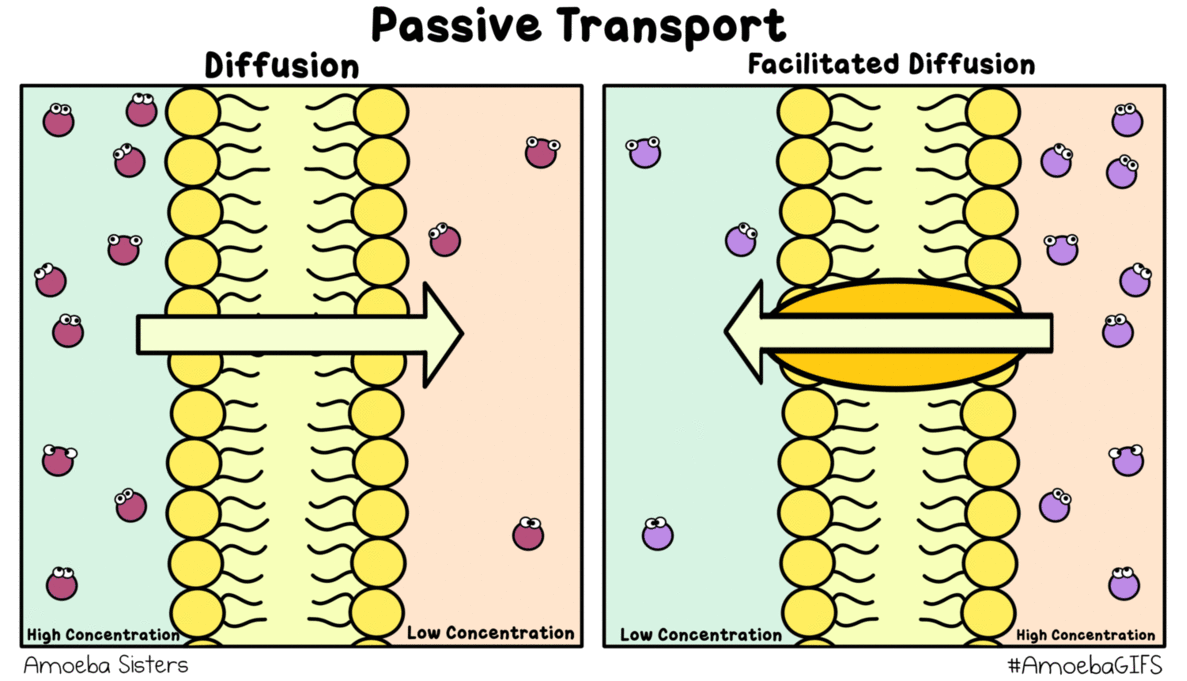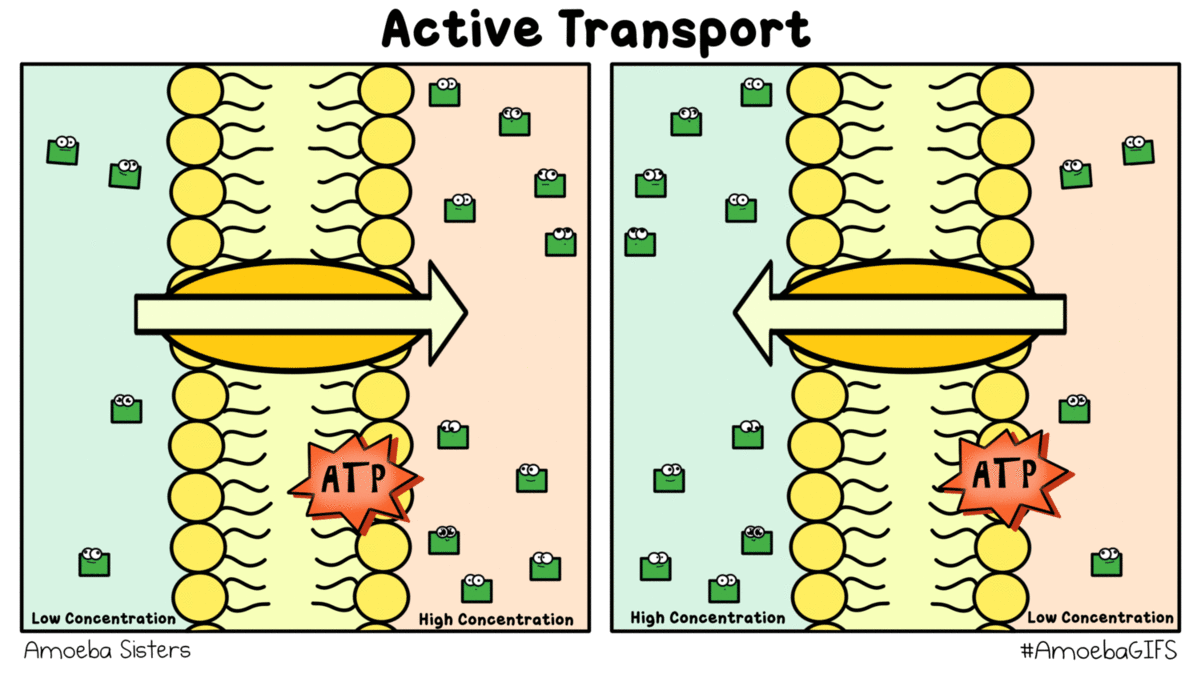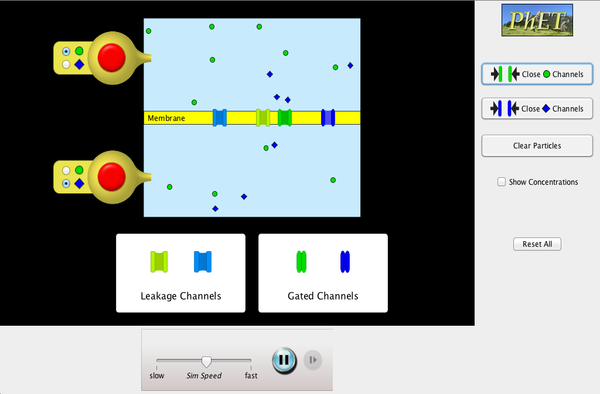Today in class we practiced marking the text in CERs as well as grading them based on the class rubric! Below is a copy of the CER packet, as well as the scaffolded CER for Osmoregulation.
Power Point Lesson
CER Packet
Osmoregulation CER
Have a great break! :)
-Ms. Barnes
Friday, November 20, 2015
Wednesday, November 18, 2015
Solution strengths and cell homeostasis
Welcome back, Panthers!
Today we are learning about how different strengths of solutions can impact cell homeostasis in plants and animals.
First off, we need to know what a solution is. It is a mixture where a solid (solute), often sugar or salt in biology, is completely dissolved into a liquid (solvent), usually water. The image below models the idea of dissolving a solute in a solvent to make a solution.
Compared to the amounts of water, sugar, and salt inside of a cell, solutions can either be stronger (have more solute), the same, or weaker (have less solute). We have names for these, shown on the diagram below.
Today we are learning about how different strengths of solutions can impact cell homeostasis in plants and animals.
First off, we need to know what a solution is. It is a mixture where a solid (solute), often sugar or salt in biology, is completely dissolved into a liquid (solvent), usually water. The image below models the idea of dissolving a solute in a solvent to make a solution.
Compared to the amounts of water, sugar, and salt inside of a cell, solutions can either be stronger (have more solute), the same, or weaker (have less solute). We have names for these, shown on the diagram below.
These solutions affect osmosis in cells. Water will move into the cell from a hypotonic solution, causing it to get larger. Water will move in and out of a cell in an isotonic solution, so the cell size will be constant. In a hypertonic solution, water will move out of the cell, causing it to shrink. The Amoeba Sisters say it better in pictures:
To maintain homeostasis, an animal cell needs to be surrounded by an isotonic solution. Plants are a little different, though.
Plants NEED to be an a hypotonic solution to be healthy. The cell will swell up with water and it will push against the cell wall. This makes the plant stand upright. This is what healthy plants do. When they run out of water, they wilt.
As always, you can download today's powerpoint here.
You can find the guided notes here.
A completed set of the guided notes are here.
Your homework tonight is to complete the questions and summary spaces in all of your notes for the week and to make flashcards for the following terms:
- Hypertonic
- Hypotonic
- Isotonic
- Active Transport
- Passive Transport
- Diffusion
- Osmosis
Tuesday, November 17, 2015
Passive and Active Transport
Today we are learning about how cells move materials in and out. We have learned that the cell membrane is in charge of this, but today we are going to learn about this in more detail.
Yesterday we learned about osmosis and diffusion. These processes occur when there is a high concentration of solutes somewhere. The image below shows diffusion.
These processes occur automatically, and they do not require energy to be used to move the particles around. This is because energy has already been put into GATHERING the solutes in a high concentration in one place. Because these processes do not require energy, we call these things passive transport.
Here is a complete set of the guided notes for you to use, as well!
Finally, if you'd like to have someone else explain this all to you, please visit this site from Diffen.com or view this interactive animation from Wiley.
Yesterday we learned about osmosis and diffusion. These processes occur when there is a high concentration of solutes somewhere. The image below shows diffusion.
These processes occur automatically, and they do not require energy to be used to move the particles around. This is because energy has already been put into GATHERING the solutes in a high concentration in one place. Because these processes do not require energy, we call these things passive transport.
Thanks again, Amoeba Sisters. Please look at their site for tons of great biology animations.
In the image above, you can see particles diffusing right through the cell membrane. Water, oxygen gas, and carbon dioxide can do this. On the right you see particles moving through what looks like a tunnel. That is a membrane protein channel, which allow substances like salts to move through. Salts can't get through the cell membrane on their own. This is still passive transport- the salts are diffusing, but they have to go through a special pathway.
Sometimes the cell needs to use energy to move things around. Some molecules (like proteins and sugars) are too big to fit through the cell membrane, and the cell needs to use energy to bring them in. Sometimes the cell needs to move things from low concentration to high concentration (the opposite direction of diffusion!). These things take energy in the form of ATP, and this is called active transport.
It turns out that the cell membrane is a lot more interesting than we have portrayed it to be. You can watch a video of all of this transport in action below.
You can download the guided notes here. You can download today's powerpoint here. Snowbound kiddos - I know there's a blizzard, but you're still responsible for this content!
Finally, if you'd like to have someone else explain this all to you, please visit this site from Diffen.com or view this interactive animation from Wiley.
Sunday, November 15, 2015
Diffusion and Osmosis
Hello again, Panthers! I'm back!

 Today we are learning about diffusion and osmosis. You can click here to see today's presentation.
Today we are learning about diffusion and osmosis. You can click here to see today's presentation.
Thanks to leavingbio.net for the images of diffusion and osmosis above. You can visit their site for a great explanation of all topics for the week.
Here is a complete set of the guided notes from today.
Your homework for tonight is to complete the questions column and summary for BOTH SIDES of your guided notes AND make flashcards for 'diffusion' and 'osmosis'. You can find a reminder of the flashcard format here.
Oh.. here are our students from period 1, diffusing across the classroom:
And for you high achievers, here is an online simulation of materials moving through membranes:

 Today we are learning about diffusion and osmosis. You can click here to see today's presentation.
Today we are learning about diffusion and osmosis. You can click here to see today's presentation.Thanks to leavingbio.net for the images of diffusion and osmosis above. You can visit their site for a great explanation of all topics for the week.
Thanks to the Amoeba Sisters for the image above. Their site has great explanations for a variety of topics in biology. Check them out!
Here is a complete set of the guided notes from today.
Your homework for tonight is to complete the questions column and summary for BOTH SIDES of your guided notes AND make flashcards for 'diffusion' and 'osmosis'. You can find a reminder of the flashcard format here.
Oh.. here are our students from period 1, diffusing across the classroom:
And for you high achievers, here is an online simulation of materials moving through membranes:
Thursday, November 12, 2015
Cell Structure Weekly Summary
We are wrapping up the first week on Homeostasis tomorrow! In preparation for the quiz, below are the materials we have been using in class as well as some answer keys.
Class Activities
Homeostasis Notes
Microscope Lab Packet
Cell Structure Synthesis Questions
Mad Minute
Mad Minute Answer Key
Review Materials
Review Sheet
Review Sheet Answer Key
CER Resources
Sentence Stems
Let me know if you have any questions!
raechel_barnes@dpsk12.org
-Ms. Barnes
Class Activities
Homeostasis Notes
Microscope Lab Packet
Cell Structure Synthesis Questions
Mad Minute
Mad Minute Answer Key
Review Materials
Review Sheet
Review Sheet Answer Key
CER Resources
Sentence Stems
Let me know if you have any questions!
raechel_barnes@dpsk12.org
-Ms. Barnes
Tuesday, November 3, 2015
Matter and Energy Study Answer Keys
I hope today's lesson informed you on what you should focus on most when studying for the upcoming Matter and Energy test on Thursday! Below are the answer keys to some of the worksheets you received in class today, including the practice test!
Biomolecules - Still working on the CER!
Enzymes
Photosynthesis and Respiration
Exit Ticket Answer Key
Enzymes
Photosynthesis and Respiration
Exit Ticket Answer Key
As always, let us know if you have any questions!
-Ms. Barnes
raechel_barnes@dpsk12.org
Monday, November 2, 2015
Matter and Energy Test Study Materials
Hope you are all excited to show off what you know about matter and energy on the unit test this Thursday! Below are numerous resources to help you prepare for the upcoming test. Right now, they are all blank worksheets, mad minutes, or some great videos to refresh your knowledge. The answer key post will be available Tuesday afternoon for you to check your answers to.
Worksheets
Blank Practice Test
Blank Mad Minute
Biomolecules Worksheet
Enzymes Worksheet
Photosynthesis and Respiration Worksheet
Photosynthesis and Respiration Cut Outs
Here is the data you will need to help your with the practice test CER.
Informational Videos
Photosynthesis and Respiration
Enzymes
I'd also advise you to look through past posts on the website to view additional material. Some are even answer keys to activities we did in class!
If you have any questions, please let us know!
-Ms. Barnes
Worksheets
Blank Practice Test
Blank Mad Minute
Biomolecules Worksheet
Enzymes Worksheet
Photosynthesis and Respiration Worksheet
Photosynthesis and Respiration Cut Outs
Here is the data you will need to help your with the practice test CER.
Time
|
# of Leaves with Light
|
# of Leaves No Light
|
1
|
0
|
0
|
2
|
1
|
0
|
3
|
2
|
0
|
4
|
4
|
0
|
5
|
5
|
0
|
6
|
8
|
0
|
7
|
10
|
0
|
Informational Videos
Photosynthesis and Respiration
Enzymes
I'd also advise you to look through past posts on the website to view additional material. Some are even answer keys to activities we did in class!
If you have any questions, please let us know!
-Ms. Barnes
Subscribe to:
Comments (Atom)
